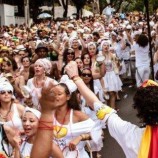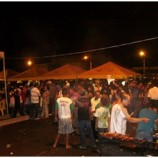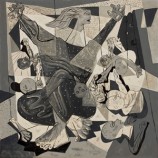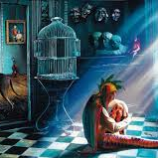The decision of the spirit is another basic core. Sorcery stories are built around it. Silent knowledge is a general position of the assemblage point. Ages ago it was man’s normal position, but, for reasons which would be impossible to determine, man’s assemblage point moved away from that specific location and adopted a new one called “reason.”
Not every human being is a representative of this new position. The assemblage points of the majority of us are not placed squarely on the location of reason itself, but in its immediate vicinity. The same thing is the case with silent knowledge: not every human being’s assemblage point is placed squarely on that location either.
The place of no pity, being another position of the assemblage point, is the forerunner of silent knowledge, and yet another position of the assemblage point called “the place of concern,” is the forerunner of reason.
The idea of the abstract, the spirit, is the only residue that is important. One of the most dramatic things about the human condition is the macabre connection between stupidity and self-reflection. It is stupidity that forces us to discard anything that does not conform with our self-reflective expectations. For example, as average men, we are blind to the most crucial piece of knowledge available to a human being: the existence of the assemblage point and the fact that it can move.
For a rational man it’s unthinkable that there should be an invisible point where perception is assembled. It is even more unthinkable that such a point is not located in the brain, if he would ever meditate on his existence.
For the rational man to hold steadfastly to his self-image insures his abysmal ignorance. He ignores, for instance, the fact that sorcery is not incantations and hocus-pocus, but the freedom to perceive not only the world taken for granted, but everything else that is humanly possible.
The average man’s stupidity is most dangerous; he is afraid of sorcery. He trembles at the possibility of freedom. And freedom is at his fingertips. It’s called the third point and it can be reached as easily as the assemblage point can be made to move.
We do not have to be students of sorcery to move our assemblage point. Sometimes, due to natural although dramatic circumstances, such as war, deprivation, stress, fatigue, sorrow, helplessness, men’s assemblage points undergo profound movements.
This is another of the sorcerers’ contradictions: it’s very difficult and yet it’s the simplest thing in the world. I’ve told you already that a high fever could move the assemblage point. Hunger or fear or love or hate could do it; mysticism too, and also unbending intent, which is the preferred method of sorcerers.
If the men who find themselves in such circumstances are able to adopt a sorcerer’s ideology, they would be able to maximize that natural movement with no trouble. And they would seek and find extraordinary things instead of doing what men do in such circumstances: crave the return to normalcy.
When a movement of the assemblage point is maximized, both the average man or the apprentice in sorcery becomes a sorcerer, because by maximizing that movement, continuity is shattered beyond repair.
Related Articles
















